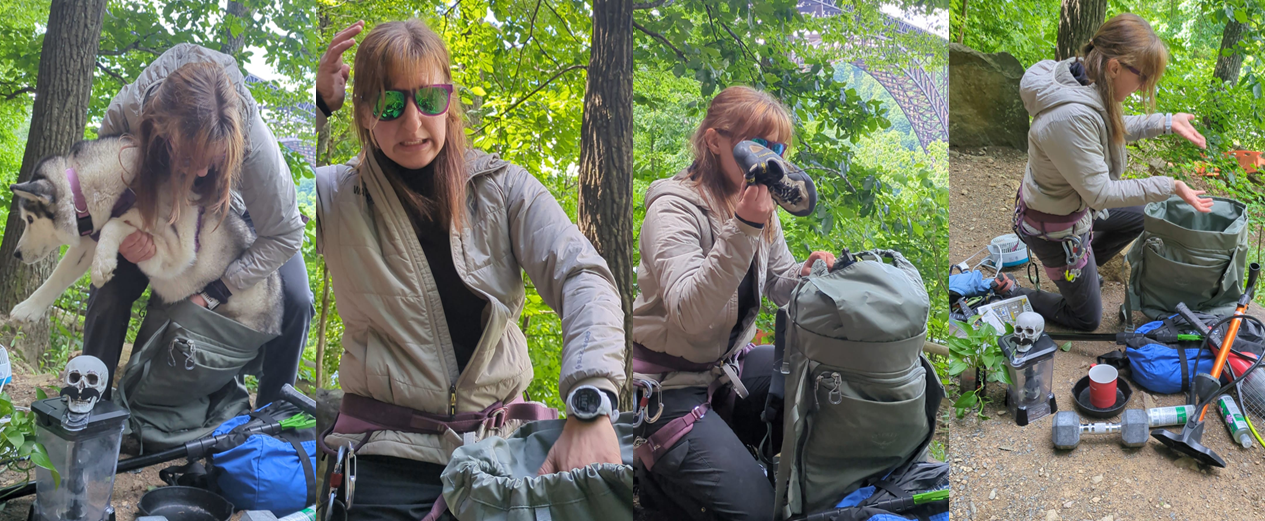What’s In Your Bag?
It’s 9 am, you wake up late (or early) for a day out at the crag. Half asleep, you shimmy out of your sleeping bag, boil some water for coffee, and throw everything in the trunk. With sleepy eyes, you pull into the last parking spot and start shoveling things into your bag. Harness? Check. Gear sling with hopefully enough quick draws? Sure. Rope? Got it. Sour Patch Kids? Oh yeah! Your buddies are yelling at you to hurry up so you can spend all day chilling by the lake and working on your projects. It looks like you have everything you need! With a confident nod at your pack, you sling it over your shoulders and start running after your buds as they disappear down the trail.
We’ve all been there: we think we have everything we need and there is always *one* item we forget. (Like climbing shoes!)
We talked to seasoned climbers and got the top 7 items that are either commonly forgotten… or not even on some climbers’ checklist!
Helmet
Did you know that the majority of serious climbing-related accidents at the New could be prevented if the climber was wearing a helmet?
Accidents happen. A rock that has been a secure jug for years may have finally been eroded loose from yesterday’s rain. Or a foot gets caught in the rope right at the crux and one flips over as they take a whip. Or a climber accidentally goes off route and pulls out a big rock that looks like a solid handhold.
Similar to last month’s blog topic: We want you to climb safe.
First Aid Kit
Do you know where your first aid kit is? We always recommend to stock up on band-aids and tape (and anything to stop bleeding) and eye drops.
Water & Electrolytes
The temperature can heat up quickly once the sun rises enough to hit the wall. And places like Orange Oswald can be in the sun all-day with little shade. It’s important to double-check that you have extra water and electrolytes in the form of food or electrolyte powder before you climb.
Sunscreen & Bug Spray
You may start the approach while the sun is still rising, but before you know it you’re above the trees or belaying from a sunny location. Or, you’re belaying in the middle of the woods with no wind and are being eaten alive by mosquitoes.
Head Lamp
It is easy to lose track of time while working on a project and all of a sudden you’re trying to hike back to the car in the dark. A cell phone flashlight can only illuminate so far, and a headlamp is a small add-on that barely takes up any weight or volume.
Guide Book (And downloaded images off a climbing app)
Good guidebooks are worth their weight in gold, especially when you are unfamiliar with a particular crag.
They have detailed maps outlining the walls and where on the wall specific routes are. And, the books do not require electricity to work!
Not to mention, you’re supporting the author(s) that wrote them.
If you do decide to rely on Mountain Project, we recommend downloading the area for offline mode, as signal can be spotty in a few areas.
BONUS: Etiquette and respect for those around you and the land you are climbing on
Do you know where you are climbing? Is the land on private property or part of the NPS system? Can I top-out on this route? Are hammocks allowed? Am I courteous to those around me? Do my climbing neighbors like me blasting One Last Breath (by Creed) on their JBL speaker or are they having trouble hearing each other while on the wall?
These are all great questions to be aware of as you climb at the New.
When we are good stewards of the land and represent ourselves well, the community notices (and is more likely to work with us to expand climbing areas in the future!). There is also the alternative: if we are disrespectful then it is very easy for the private landowners to take away access to some of our favorite crags.
Want to know what is open and what is being worked on? We always recommend reaching out to NRAC: New River Alliance of Climbers, to get the latest beta on crag and parking information. (And throwing a few bucks their way to help future bolting, trail access and parking efforts).
Instagram Link: https://www.instagram.com/nrac.official
Official Page: https://www.newriverclimbing.net/
Before you head out to climb, ask yourself “what’s in your bag?”

